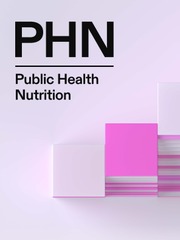No CrossRef data available.
Article contents
Enacting Healthy Checkout Policies: Lessons from Berkeley and Perris, California
Published online by Cambridge University Press: 07 November 2025
Abstract
To examine policy processes and industry opposition surrounding the first U.S. Healthy Checkout Ordinances (HCOs), which mandate nutritional standards for foods and beverages displayed in grocery checkout areas.
Qualitative case study comparison using Kingdon’s Multiple Streams Framework, triangulating city records, advocacy materials, and key informant interviews.
Local governments of Berkeley and Perris, California, USA.
Informants, identified from documents and snowball sampling, included community-based organization members/local advocates (Berkeley n=6; Perris n=1), staff from national nongovernmental organizations providing assistance (Berkeley n=2; Perris n=2), city councilmembers (Berkeley n=2; Perris n=2), city commissioner (Berkeley n=1), and city staff (Perris n=2).
We described and compared each city’s HCO enactment process. In both, prior commitments to community-led food environment reforms enabled advocates to garner financial and technical support for early coalition building. Berkeley used soda tax proceeds for a youth-led citizen science project to formulate an enforceable HCO and assess public support. These experiences fostered political commitment to define applicable stores, checkout areas, and nutritional standards. Campaigns emphasized protecting children and parents from predatory marketing and impulse buying. Berkeley’s campaign quietly and cautiously engaged mostly independent retailers, attracting limited industry attention; Perris engaged all retailers, and after enactment, faced open opposition from a chain store and trade associations. Perris’ amended HCO included concessions allowing unhealthy items at many endcaps and long checkout lanes.
HCO enactment may be facilitated by prior food policy experience, community capacity, early coalition building, careful policy design and framing, and anticipating and managing industry opposition.
Information
- Type
- Research Paper
- Information
- Creative Commons
- This is an Open Access article, distributed under the terms of the Creative Commons Attribution licence (http://creativecommons.org/licenses/by/4.0/), which permits unrestricted re-use, distribution and reproduction, provided the original article is properly cited.
- Copyright
- © The Author(s), 2025. Published by Cambridge University Press on behalf of The Nutrition Society

